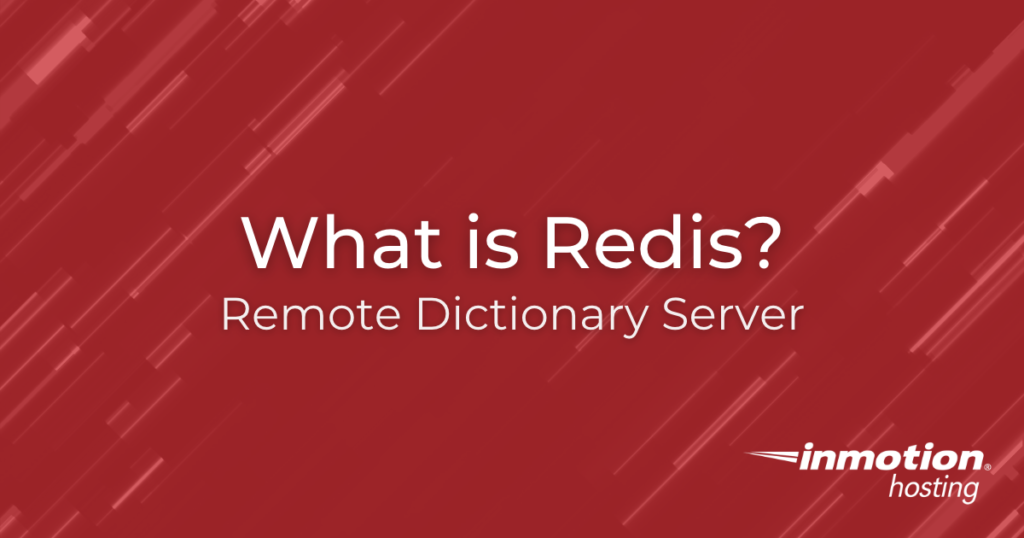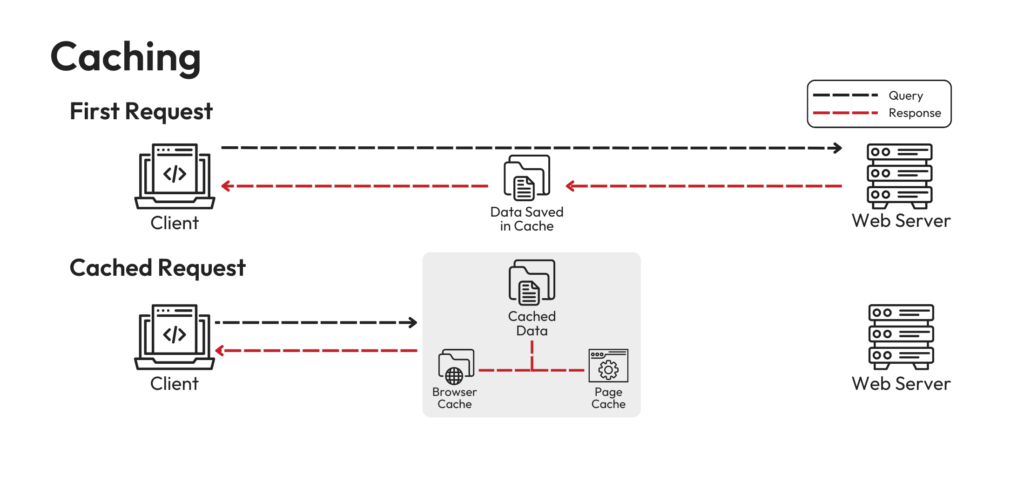
Redis (Remote Dictionary Server) is an in-memory database structure with multiple features that improve the availability and performance of your website. It is an open source project created by Salvatore Sunfilippo of early 2009 for his tech startup.
In this article, we’ll explore the many benefits Redis offers and how you can use it to speed up your website, including installing WordPress.
What is Redis Cache?
Overall, Redis can be used for: wide range of benefitsone of which is object caching.
According to the introductory documentation, Redis defines their technology as:
“[Providing] Data structures such as strings, hashes, lists, sets, sorted sets with range queries, bitmaps, hyperlog logs, geospatial indexes, and streams. Redis has built-in replication, Lua scripts, LRU eviction, transactions, various levels of on-disk persistence, and provides high availability through automatic partitioning with Redis Sentinel and Redis Cluster. “
However, the main point new users should take is that Redis is data structure systemorganizes data in a unique format to better deliver messages and improve website or application performance.
Redis is compatible most programming languages:
Redis attracts many users because of its many advantages, such as:
- High performance and low latency
- Ability to handle large datasets
- Clustering function
- Quick data manipulation tasks
What is Redis used for?
Now that we understand the definition of Redis and some of its features, let’s take a closer look at why some developers prefer using Redis as a way to improve website performance.
speed
One of Redis’ main advantages is its speed.Redis can perform many operations because the data is stored in memory Faster than traditional databasesThis makes it ideal for applications that require fast data retrieval and modification. Redis can handle up to 500,000 operations per secondsuitable for even the most demanding applications.
data durability
Data can be backed up to disk on a regular basis, ensuring data stored in Redis is protected in the event of a server failure.
data structure
Redis also offers a wide range of data structures, making it ideal for applications that require complex data processing. Redis supports 5 different supports data structurestrings, hashes, lists, sets, and sorted sets.
built-in script
Redis supports built-in scripting, allowing developers to write scripts to modify data structures and perform complex operations without writing custom applications. It also makes it easier to add new features and optimize existing applications.
How can Redis improve the performance of my WordPress VPS?
Redis is a powerful tool that speeds up your WordPress VPS by providing an in-memory key-value store for caching data, reducing the need for database queries and enabling faster data retrieval.
It can also be used for message queuing and pub/sub communication, further improving VPS performance.
Redis also speeds up your website by reducing the number of requests to your database and caching pages, objects, and database queries.
Finally, Redis caching can also store user sessions, reducing server load and improving user experience.
WordPress and Redis caching system
The WordPress Redis caching system uses the Redis in-memory data structure store to store and retrieve cached data.
You can use Redis’ in-memory data structures to store and retrieve cached data on your WordPress website. These applications are known as the WordPress Redis caching system.
This caching system can store a variety of data and provide high-performance caching for high-traffic WordPress sites. It is also easy to configure and manage and has many features such as data replication, high availability and scalability.
Blogger metrics categorizes the three types of caching as follows:
- server side cache – Caching at the server level. NGINX FastCGI cache and varnish page caching Here are two examples of server-side caching. Another example of server-side caching is object caching.
- WordPress side caching – Caching at WordPress level. plugins like W3 Total Cache, WP Rocket, WP Super Cachewhich is an example of all WordPress-side caching.
- client side caching – Caching at the local browser level. Browser cache is an example of client-side caching.

8 types of caches in WordPress
Extending the above information further, the WordPress cache can be divided into the following sections:
- page caching – Page caching is the caching of web page content user’s browser Reduce server load and bandwidth usage. Page caching also speeds up page load times because the content does not need to be generated each time the page is accessed.
- browser cache – Browser caching keeps web page resources (HTML, CSS, JavaScript, images, etc.) user’s deviceThis allows the browser to load resources from cache instead of downloading them from the server.
- database caching – Database caching is a technique used to improve database performance by storing requested data. of memory. This reduces the time required to access data from the database, resulting in faster response times. Caching can also be used to improve system scalability by spreading the load over many machines.
- object caching – Object caching is the process of storing accessed data, such as database query results, web page source code, or API responses, in memory for quick access. This eliminates the need to access the original data source, reducing latency and improving performance. Object caching can be handled by software, hardware, or a combination of both.
- temporary cache – Temporary caching is a method of storing data in memory to reduce the time and resources required to access data from a database or other data store. Used in web applications to improve performance by reducing the amount of data that needs to be retrieved from the database. Temporary caching can also be used to speed up processing requests from users and reduce network traffic.
- fragment caching – Fragment caching is a caching method in which specific parts of a web page, such as a single section of the page or a specific module, are stored in the cache. This makes pages load faster and reduces the amount of queries sent to the database.
- opcode caching – Opcode caching is a method of optimizing the performance of PHP applications by caching the compiled form of code (opcodes) in memory. This removes the overhead of parsing and compiling code for each request. This process reduces the amount of processing time and memory required to run your application.
- CDN caching – CDN (Content Delivery Network) Caching is a technology for fast delivery of web content by storing it on servers in different geographical locations. When a user tries to access content, it is served from the closest server, reducing latency and improving the user experience.
Redis and WP-CLI
WP-CLI is a command line interface for managing your WordPress site, ideal for time-consuming and complex tasks and changes through the UI.
This interface can be used to manage Redis. command Interact with the Redis server.
The commands are:
- Flashing the Redis database
- Setting an expiration timer
- Individual key operation
WP-CLI It can also be used to view and modify configuration settings associated with a Redis instance, allowing users to quickly modify their Redis setup.
final thoughts
Redis is a very powerful and versatile tool that can be applied to solve many different problems. It’s fast, reliable, and easy to use, making it an ideal choice for many applications.
Whether you’re looking for a simple caching solution or a full-fledged data store, Redis can provide the performance and scalability you need.
Overall, Redis and WordPress are a great combination for web developers and freelancers looking to create powerful and efficient WordPress websites while maximizing speed and performance to improve user experience.

